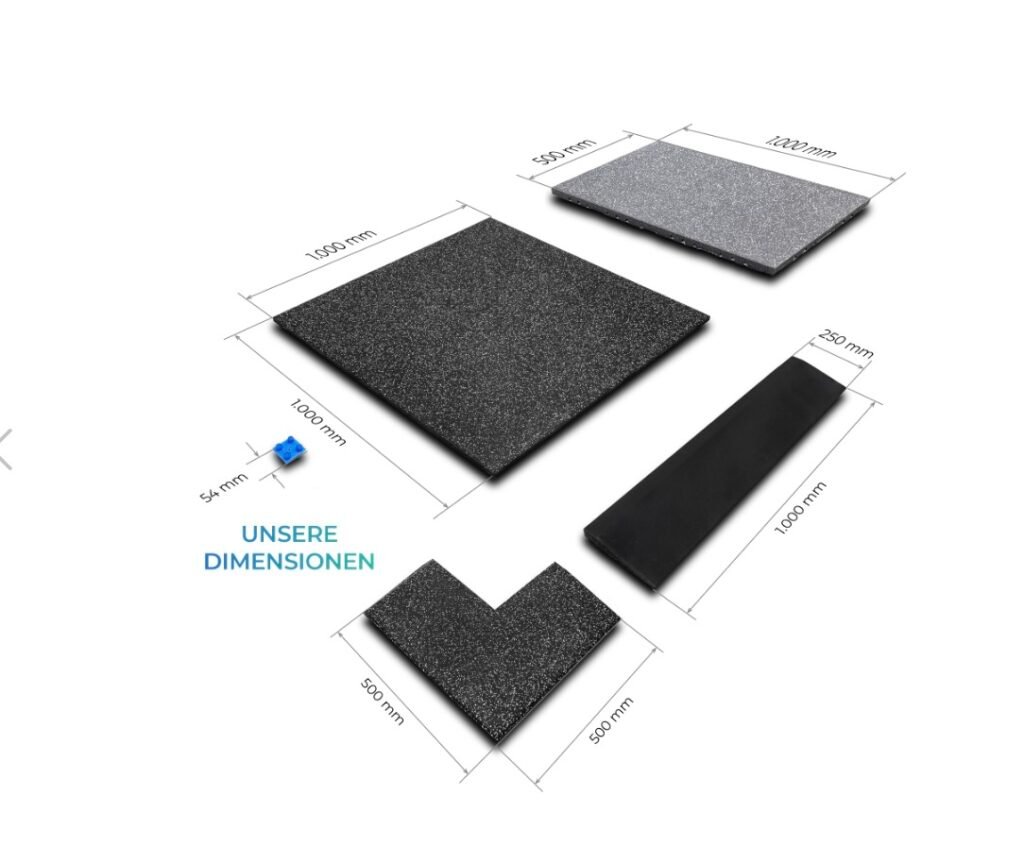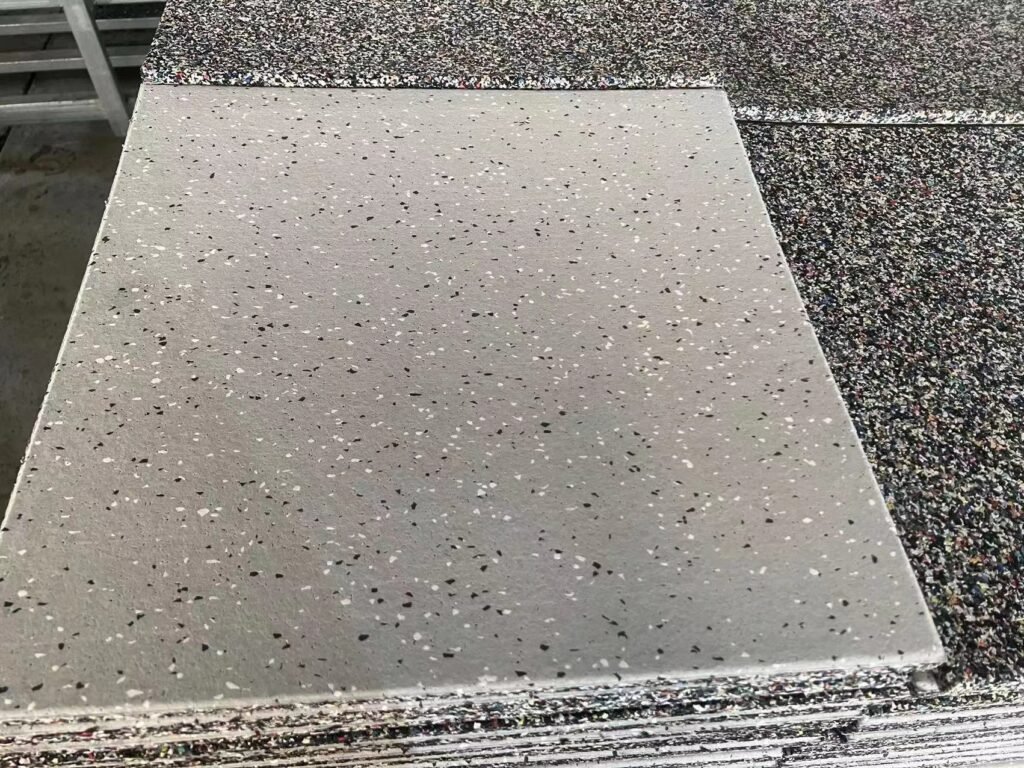
Building the perfect home gym is a rewarding project that combines convenience, personal comfort, and fitness goals. But as you contemplate your choice of gym equipment, from cardio machines to heavy weights, one crucial aspect should always be considered – the flooring.
Your home gym’s flooring isn’t just a luxury; it’s a necessity that serves both a functional and aesthetic purpose. Whether you’re repurposing a room, garage, or basement into your workout space, the floor underneath your exercise equipment needs to be sturdy, shock-absorbent, and resilient. This brings us to a vital question many home gym owners ask: “What is the best flooring for a home gym?”
This comprehensive guide delves deep into home gym flooring, examining options like rubber rolls, foam mats, interlocking tiles, and vinyl flooring. We’ll consider factors such as cost per square foot, ease of installation, and compatibility with heavy exercise equipment. Whether you’re a fan of heavy lifting, bodyweight exercises, or cardio workouts, this guide will help you make the most informed choice for your home gym flooring.
Stay tuned as we tackle all your burning questions, from the suitability of rubber and foam for your gym floor, to the preferred thickness of your flooring, and whether or not you should put a mat under your workout space. Let’s dive in!
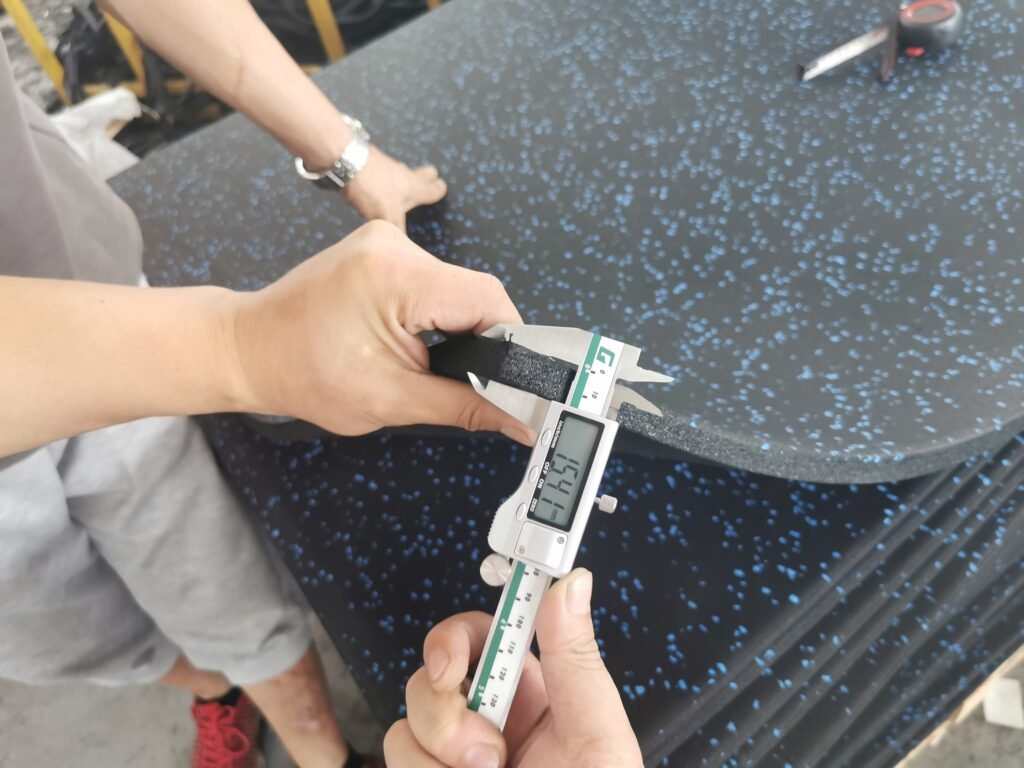
Do I Need a Rubber Floor for My Home Gym?
Deciding on the type of flooring for your home gym can be challenging, particularly with the myriad options available. One of the most popular and widely used is rubber flooring. But do you need a rubber floor for your home gym?
The answer generally leans towards ‘yes,’ primarily due to the numerous advantages that rubber flooring offers. This includes durability, safety, comfort, and noise reduction. These features are paramount in weight training and floor exercises, making rubber flooring a go-to choice for many fitness enthusiasts.
Is Rubber Flooring Good for Gyms and Why?
Absolutely! Rubber flooring is often the first choice for commercial gyms and home gym owners due to its outstanding features. First and foremost, rubber flooring is shock absorbent. This quality protects your gym equipment and provides a cushioning effect during exercises, reducing the impact on your joints.
Second, rubber is a resilient material that withstands heavy-duty wear and tear. Rubber flooring can handle the strain, whether you’re using heavy weights or cardio equipment. It’s water-resistant and easy to clean, making it a practical choice for workout spaces.
Last but not least, rubber flooring offers excellent traction, ensuring safety during workouts. The textured surface of rubber mats can prevent slips and falls during sweaty, intense sessions. This material’s durability and safety features make it a worthy investment for any home gym.
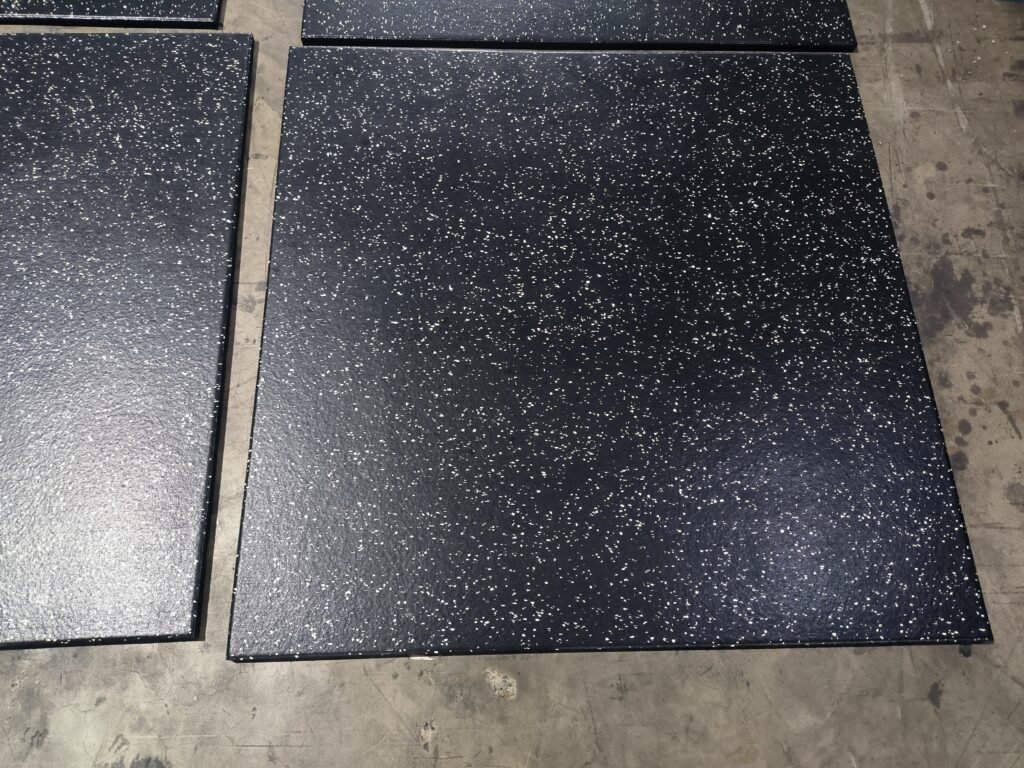
Should I Put a Mat Under My Home Gym?
Placing a mat under your home gym is a decision that hinges on several factors, including the type of exercise you plan on doing, the nature of your existing floor, and the kind of equipment you use.
A mat can be essential for those doing heavy lifting or using heavy exercise equipment. It provides additional protection to your underlying floor, absorbing shocks and preventing potential damage from dropped weights. Moreover, mats can add an element of comfort, reducing fatigue during long workout sessions.
Are Rubber Mats Good for Gym?
Rubber mats are indeed suitable for gyms, and here’s why:
1. Durability: Rubber mats are designed to withstand the rigors of a gym setting, from heavyweights to high-intensity cardio workouts. They resist wear and tear, lasting for many years without needing replacement.
2. Shock Absorption: As mentioned earlier, rubber has excellent shock absorption properties. This protects your gym equipment and body, reducing the risk of injuries.
3. Sound Insulation: Rubber mats can be a great solution if you’re concerned about noise. They dampen sounds, making your workout less disruptive to others in your home.
4. Easy Installation: Rubber mats often come as interlocking tiles or rolls, making them easy to install. Plus, they only sometimes require professional installation, saving you extra costs.
5. Maintenance: Rubber mats are water-resistant and easy to clean. They repel sweat and spilled water, helping to keep your gym hygienic.
Rubber mats offer many benefits, making them an excellent choice for home gyms.
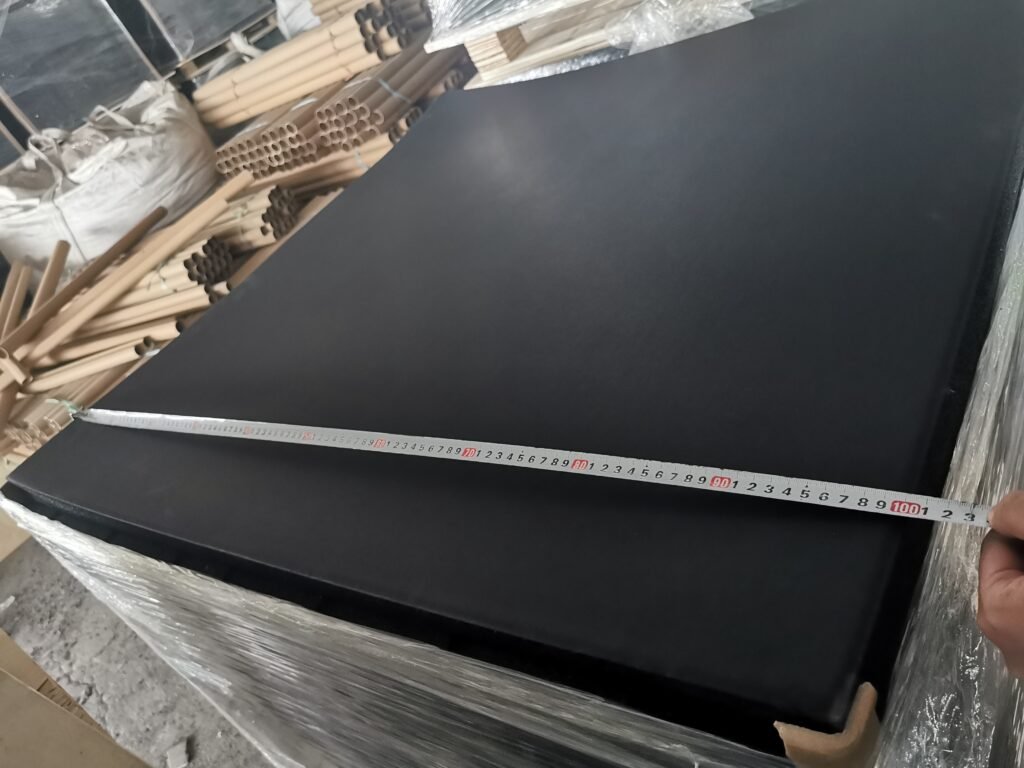
How Thick Should Home Gym Flooring Be?
The thickness of your home gym flooring can significantly affect comfort, durability, and safety. A thickness of at least 2cm or 2.5cm is recommended for most home gym floors. This provides a suitable balance between shock absorption and stability.
However, the best home gym flooring thickness can depend on your specific needs and types of workouts.
How Thick Should Rubber Gym Flooring Be for Heavy Weights?
Thicker flooring is usually better regarding heavyweight training or heavy equipment use. Rubber gym flooring for heavy weights should be at least 3cm or 3.5cm wide. Thick rubber mats or flooring rolls can withstand the impact of dropped weights, protect your existing flooring underneath, and reduce noise. Some gym owners also choose to use even thicker flooring, such as recycled rubber tiles or horse stall mats, for areas designated for heavy lifting.
What Can I Use as Flooring for My Garage Gym?
Transforming your garage into a workout room opens many home gym flooring options. The choice ultimately depends on your workout preferences, budget, and the condition of your existing garage floor.
If your garage has a relatively smooth cement floor, you can consider an array of options, including rubber rolls, foam mats, interlocking rubber tiles, or even carpet tiles. Our rubber floor is a popular choice for garage gyms due to its durability, while foam home gym flooring offers comfort and is easy to install.
For more rigorous activities or if you have heavy equipment, consider performance turf rolls, which offer a high level of shock absorption. Also, gym flooring rolls, often made of recycled rubber or tires, are a solid choice for their durability and ease of maintenance.
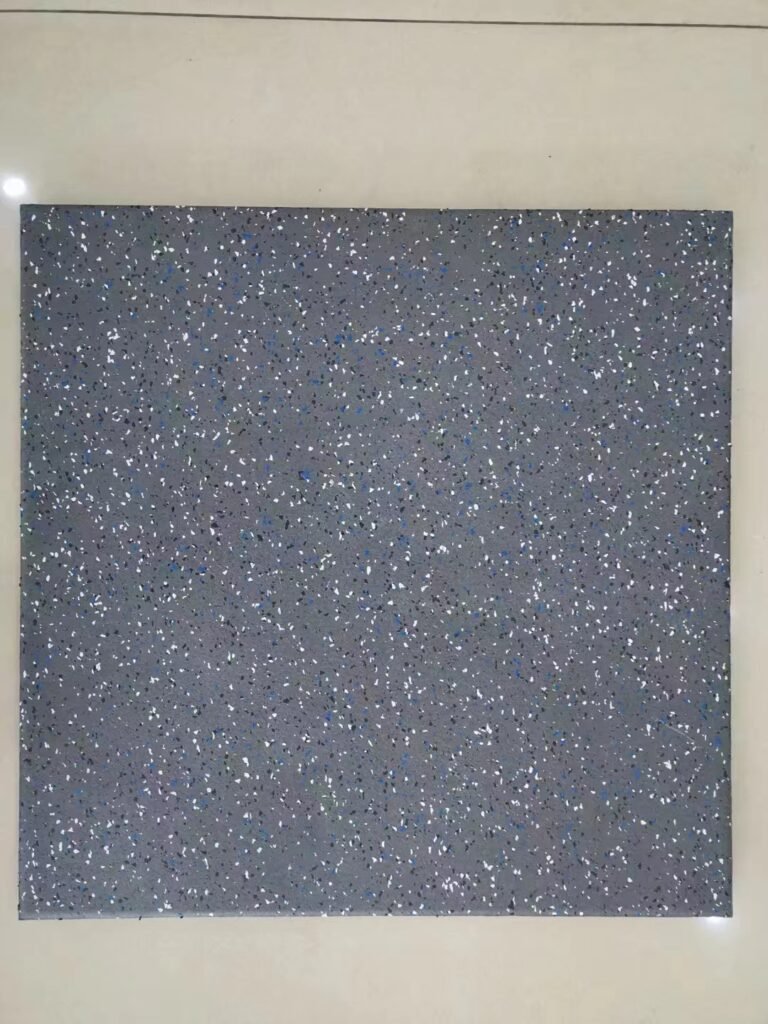
Is Vinyl or Rubber Better for Garage Gym Flooring?
Both vinyl and rubber are viable options for garage gym flooring, each with its strengths.
Rubber is exceptionally resilient and offers excellent shock absorption, vital for heavy weights or high-intensity workouts. It’s available in various forms, such as mats, rolls, and interlocking tiles, making it flexible to fit any space. It’s also easy to maintain and clean.
Conversely, vinyl is water-resistant and can give your garage gym a more refined look. It’s a perfect option if your workout area doubles as another functional space, as it comes in various designs and colors. However, vinyl may offer a different level of cushioning and protection than rubber, especially for heavy weightlifting.
While both are good options, choosing between vinyl and rubber will depend on your workout needs, aesthetic preferences, and budget.
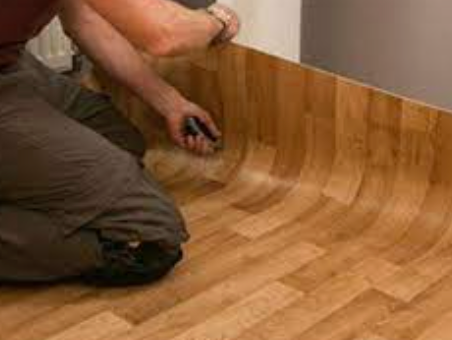
Are Foam Gym Floors Up to the Challenge of Home Gym Use?
Foam gym floors have earned a solid reputation in the home gym community due to their comfort and support, particularly for yoga, Pilates, and low-impact bodyweight exercises. The cushioning effect of foam flooring helps to protect joints and reduces the impact of your home gym workouts.
However, when it comes to accommodating heavy-duty gym equipment or rigorous workouts, foam gym floor resilience might be tested. The weight from heavy machinery or intense exercises could cause foam tiles to compress or tear over time. This is important when setting up your home gym floor with heavier workout components.
Can Foam Mats Handle the Rigors of High-Intensity Workouts?
With their superior cushioning and support, foam mats have a unique appeal for various exercises. However, foam mats might not be your best choice when high-intensity workouts are on the cards.
High-intensity workouts typically involve fast, explosive movements. While foam mats provide excellent cushioning, they may not offer the necessary grip for such activities, potentially resulting in slips or accidents. Moreover, foam mats may deteriorate faster under the strain of these high-intensity sessions.
A more resilient and slip-resistant option, like rubber home gym flooring, might be more suitable for such robust exercises. Nevertheless, foam mats can be a handy addition for parts of your gym needing additional cushioning.
Remember, your gym and garage flooring choice should reflect your workout types, their intensity, and the equipment you’ll be using. Whether it’s interlocking tile flooring, traditional rubber mats, or foam tiles, your decision should ensure a safe and effective workout space.
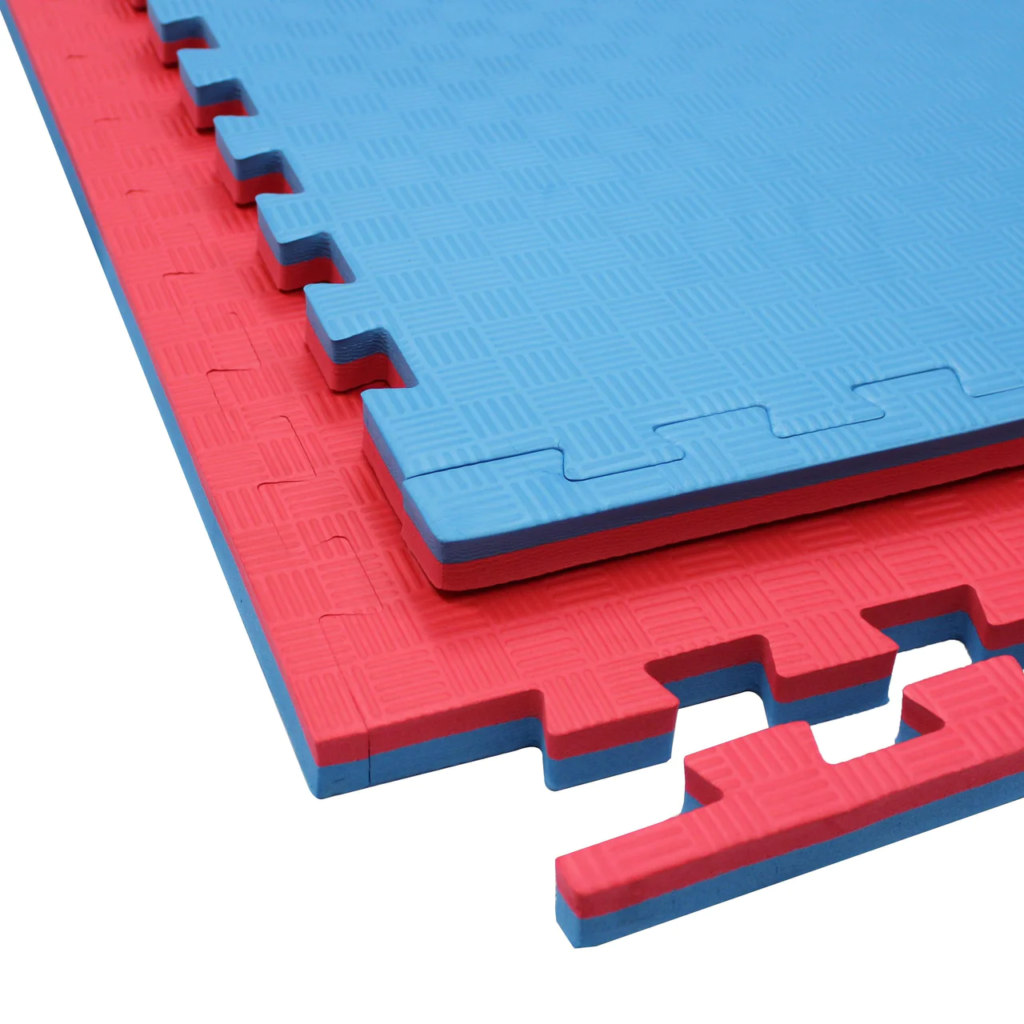
Which Flooring Solution Tops the List for a Basement Gym Space?
When transforming your basement into a fitness haven, carefully consider the flooring type that best accommodates your exercise routines and equipment. So, which flooring is superior for a basement gym area?
While the final choice hinges mainly on your preferences and the workouts you intend to do, rubber flooring often receives the gold star for basement gym floors. Renowned for its unmatched shock absorption, durability, and moisture resistance – an essential trait in constantly damp basements – rubber flooring stands out.
This option comes in various forms, such as gym mats, interlocking flooring tiles, and rubber rolls, offering adaptable solutions to accommodate a range of space dimensions and needs. It’s also available in a spectrum of thicknesses, making it a go-to choice for those heavy weightlifting sessions.
If you’re seeking a more economical alternative, consider foam tiles. Although they may not match the durability of rubber, they offer adequate cushioning and shock absorption for lower-impact workouts. Just bear in mind that foam floors may not stand up as well to heavy gym equipment.
Is it Possible to Install Rubber Flooring Over My Existing Concrete Floor?
Yes, you certainly can! It’s a frequent practice to lay rubber flooring over an existing concrete floor in commercial and home gyms.
Although concrete floors offer robustness and longevity, they can be challenging and uncompromising, particularly during intense workouts. Rubber flooring, like gym floor mats, introduces a cushioned and safer surface, reducing the strain on your joints and decreasing injury risk. This makes rubber flooring an exceptional addition to any concrete workout space, providing a more forgiving surface than traditional cement floors.
One key advantage is the simplicity of the rubber flooring’s installation process. The popular types – rubber mats and interlocking tiles – are straightforward to install. Rubber rolls can be secured with double-sided carpet tape or adhesive for a more permanent fixture.
However, ensure your concrete floor is clean and dry before installing the rubber flooring to achieve proper adherence and a smooth surface. If your existing concrete floor has noticeable cracks or unevenness, it might need repair before the rubber flooring installation.
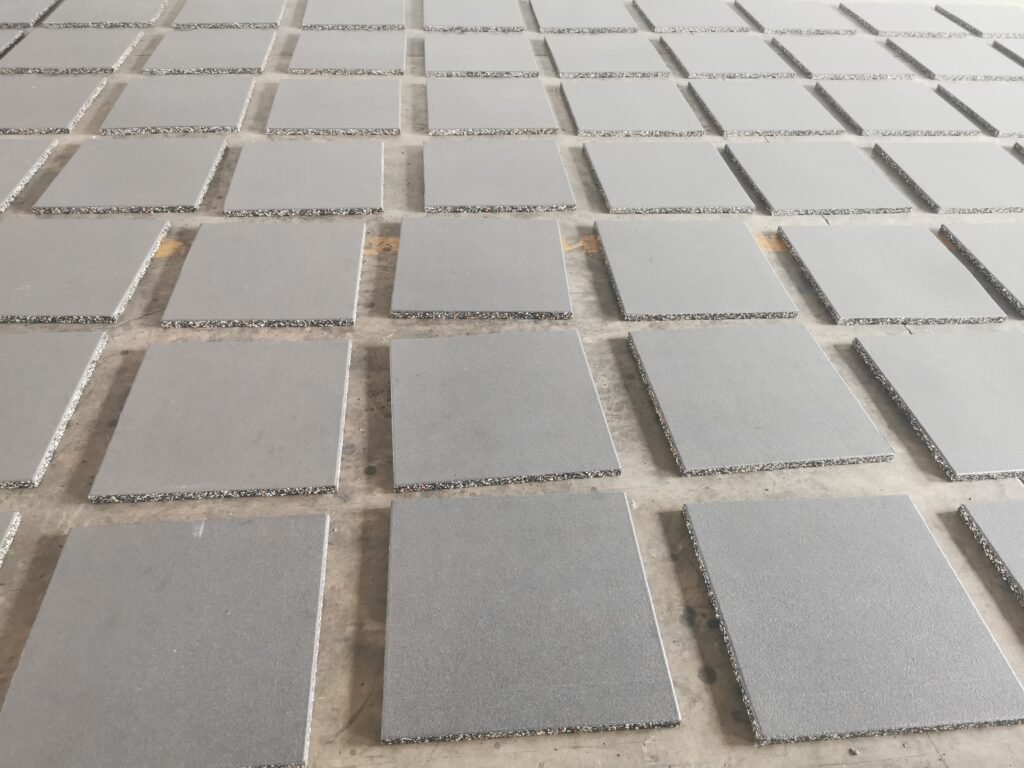
Choosing the right flooring for your home gym can significantly influence your workouts’ effectiveness, safety, and enjoyment. From rubber flooring to foam tiles, numerous options are tailored to different exercise styles, preferences, and budgets. Rubber flooring, with its robustness and superior shock absorption, often shines as the top choice, particularly in heavy-duty spaces like basement gyms. However, more budget-friendly solutions like foam tiles can serve you well, particularly for low-impact exercises.
Remember, the best gym flooring depends on your unique requirements and fitness goals. Prioritize comfort, safety, and functionality when choosing your home gym floor, and you’ll create a space that supports your journey toward fitness, health, and well-being. Happy exercising!
